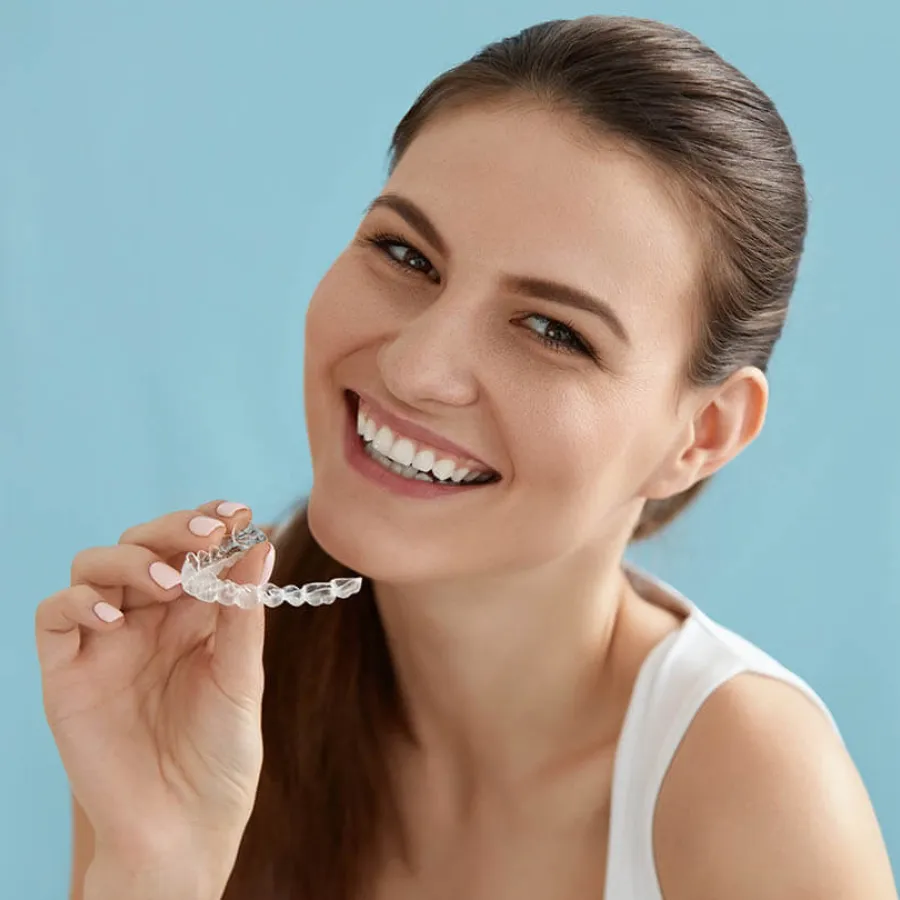
INVISALIGN
Reveal Straight Teeth With Aligners
Straighten Your Crooked Smile With Invisalign in Trophy Club
With Invisalign treatment at Trophy Smile Studio, you can expect straighter teeth without the hassle of metal braces. These clear, removable aligners shift your teeth gently into place, giving you a comfortable and discreet way to perfect your smile. We customize your treatment to fit your life and goals.
Invisalign in Trophy Club lets you eat what you want and brush easily. Plus, the orthodontic treatment is nearly invisible, so no one will notice. It works fast for many, straightening teeth in months, and boosting your confidence along the way.
Ready for a straighter smile the easy way? Contact us today for a consultation.

Achieve Your Perfect Smile Quickly & Conveniently
Invisalign therapy delivers quick results, straightening your teeth in as few as 12 months. Unlike traditional braces that can take two years or more, this treatment moves fast.
You won't have to wait long to see your new smile. Your aligners are designed to work efficiently, reducing your treatment time without cutting corners.
The convenience of Invisalign aligners makes them a standout choice. You can easily pop them out for eating, drinking, or brushing with no fuss. Heading to a special event? Take them off and enjoy yourself.
Invisalign treatment is a hassle-free way to straighten teeth while keeping your daily routine smooth and simple.

Enjoy Discreet Orthodontics With Invisalign Treatment
Invisalign's aligners are so discreet, you can straighten your teeth without anyone noticing. The clear aligners blend right in, unlike metal braces that stick out and draw attention. Whether you're at school giving a presentation or at work in a meeting, you won't feel self-conscious about your smile.
This treatment lets you avoid embarrassment while still getting great results. There aren't any bulky wires or brackets. You can laugh, talk, and live your day confidently, knowing your smile is improving without drawing unwanted attention. Your treatment is low-key and stress-free from start to finish.
To see if you're a candidate for Invisalign in Trophy Club, contact Trophy Smile Studio today for a cosmetic dentistry consultation.



